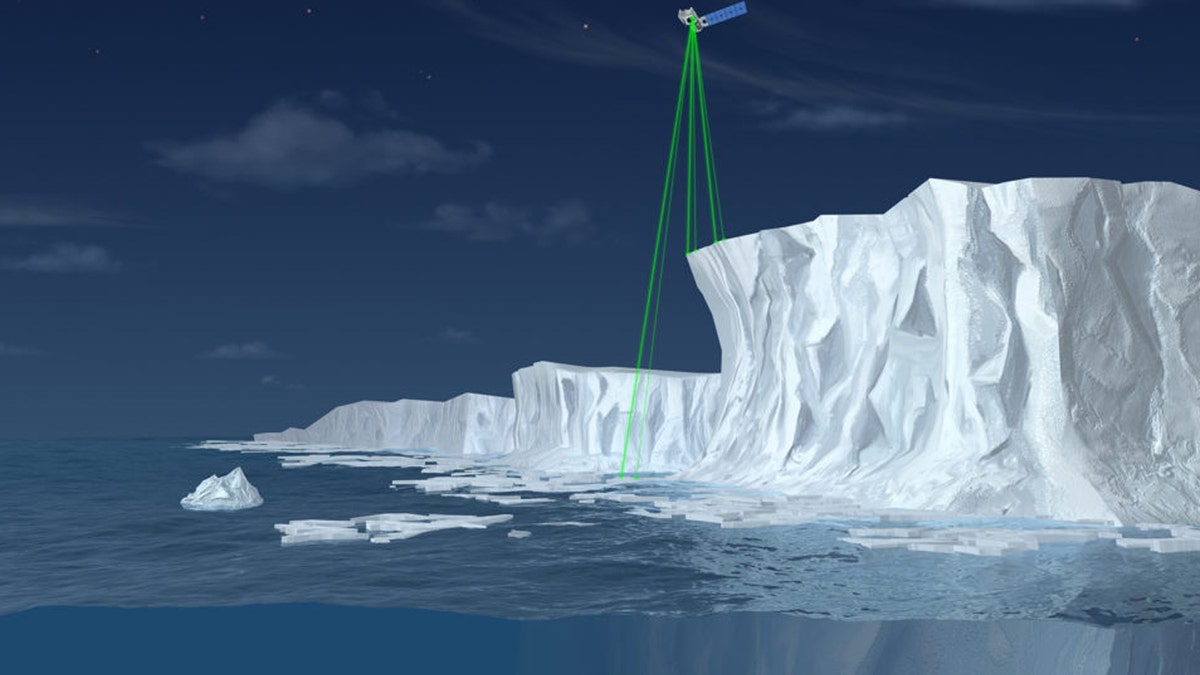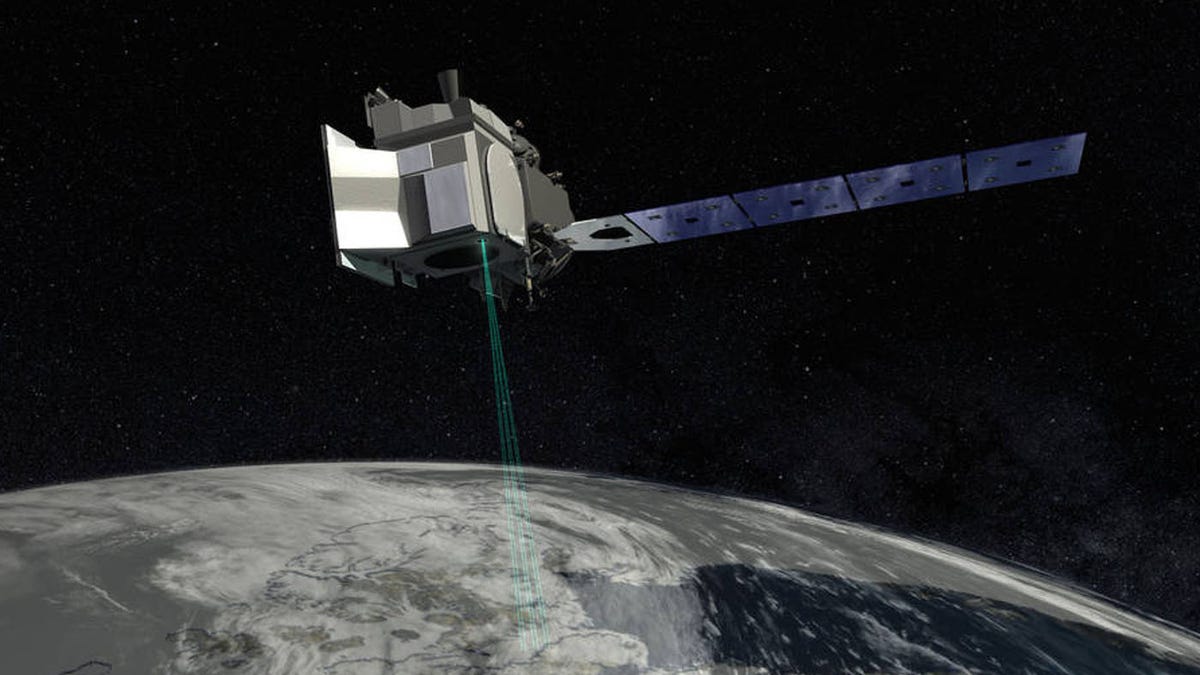
ICESat-2 will use six laser beams to measure the height of ice, as illustrated in this not-to-scale artist's rendering. (Courtesy NASA)
NASA’s says its new $1 billion satellite will give humanity a stronger, data-backed vision of exactly how fast Earth’s ice is melting.
The satellite, ICESat-2, which has a 91-day orbit, is the size of a Smart car and will send lasers back down to Earth countless times in order to give scientists a precise measurement—down to within a centimeter—of the planet’s polar ice sheets and how they’re changing, according to the agency.
Scientists will be able to examine how the ice is responding to changes in the atmosphere and the ocean, giving them a picture over time of what is making the ice melt or not in certain areas.
Once they gather this data about the thickness of sea ice and the height of ice sheets, it will inform their future models to better predict potential sea level rise scenarios, NASA says.
JAPAN LOWERS ROVERS ONTO 'DUMPLING' ASTEROID, HOPEFUL OF HISTORIC TOUCHDOWN
“As the climate is warming, we are seeing changes in the sea level—sea level is rising,” Helen Fricker, a professor of glaciology at the Scripps Institution of Oceanography who worked with NASA on the ICESat-2 project, told WBUR. “But the ultimate thing that we're trying to get to is, how much ice will we lose and how quickly will we lose it?”
According to NASA, melting ice in Greenland and Antarctica has increased the global sea level more than a millimeter per year, which is a third of the overall increase.

In this artist's concept of ICESat-2, the satellite's laser beams are visible as it orbits. (Courtesy NASA)
ICESat-2, which launched on Sept. 15, is capable of providing much more comprehensive coverage of ice loss across the world.
ASTRONAUTS GOING TO MARS WILL ABSORB CRAZY AMOUNTS OF RADIATION. HOW WE KNOW HOW MUCH.
“In the time it takes someone to blink, sort of half a second, ICESat-2 is going to collect 5,000 measurements in each of its six beams, and it’s going to do that every hour, every day … it’s a tremendous amount of data,” Tom Neumann, NASA’s deputy project scientist, told the Guardian.
According to Fricker, the first data from ICESat-2 will start coming back by mid-October.
“It's going to be all hands on deck for several months while we work out what these data are telling us, and we really wait. It's incredibly exciting,” she said.